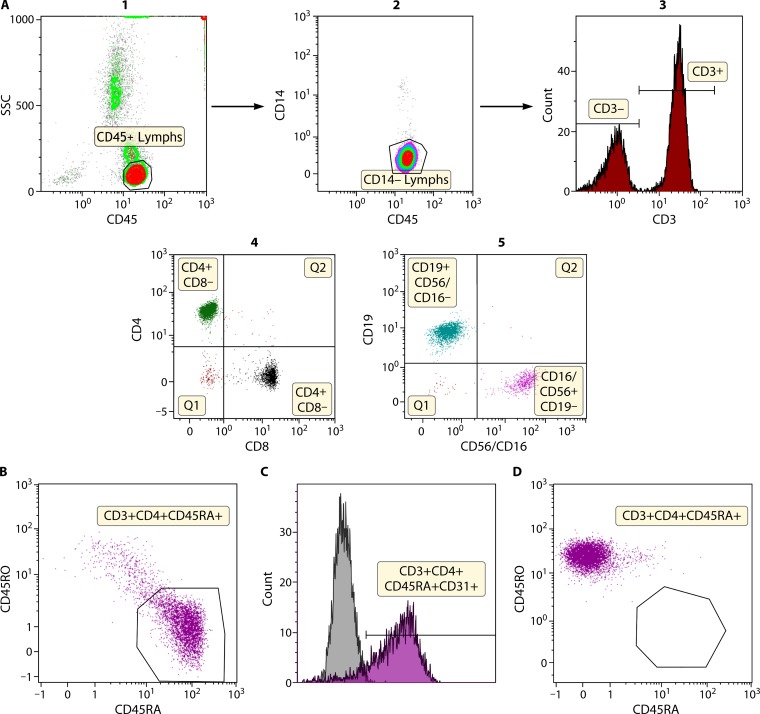FIG 5.
Immunophenotyping of lymphocyte subsets. (A) Lymphocyte subset quantitation. T, B, and NK cells can be quantitated by flow cytometry. The top panels (panels 1 to 3) show identification of lymphocytes using CD45 and side scatter (SSC). The use of CD14 allows discrimination between monocytes that may inadvertently be included in the lymphocyte population. CD45+ lymphocytes are further subdivided into CD3− lymphocytes and CD3+ T cells. The CD3+ T cells are further analyzed for CD4+ and CD8+ T cells (panel 4), and the CD3− lymphocytes are further assessed for B and NK cells (panel 5). Absolute quantitation (number of cells per microliter) can be performed with the use of fluorescent beads. (B) Identification of naive and memory T cells by flow cytometry. CD3+ T cells can be further divided based on specific cell markers (typically CD45RA and CD45RO though additional markers can be used) into naive and memory subsets. A healthy newborn infant shows predominantly naive CD45RA+ T cells in the CD4+ T cell compartment with only a few memory CD45RO+ T cells. (C) Identification of naive recent thymic emigrants by flow cytometry. CD4+ T cells are newly derived from thymic output and have typically not undergone antigen-induced cell expansion in the periphery and express CD31 (recent thymic emigrant marker). A large proportion of the naive CD45RA+ CD4+ T cells in a healthy newborn infant express CD31. (D) Identification of naive and memory T cells by flow cytometry in a patient with Omenn syndrome. In infants with leaky SCID or Omenn syndrome, there are usually no naive CD45RA+ CD4+ T cells, and the majority of T cells that are present are oligoclonally expanded and express the memory marker, CD45RO. They also have no recent thymic emigrants due to absent thymic output. This patient shows that more than 99% of CD4+ T cells present in blood express CD45RO with no CD45RA+ expression. Further, this patient demonstrated severely skewed T cell receptor repertoire diversity and absent thymic function, in addition to the phenotypic features associated with Omenn syndrome. This female patient had a RAG1 gene mutation associated with a hypomorphic form of SCID.

